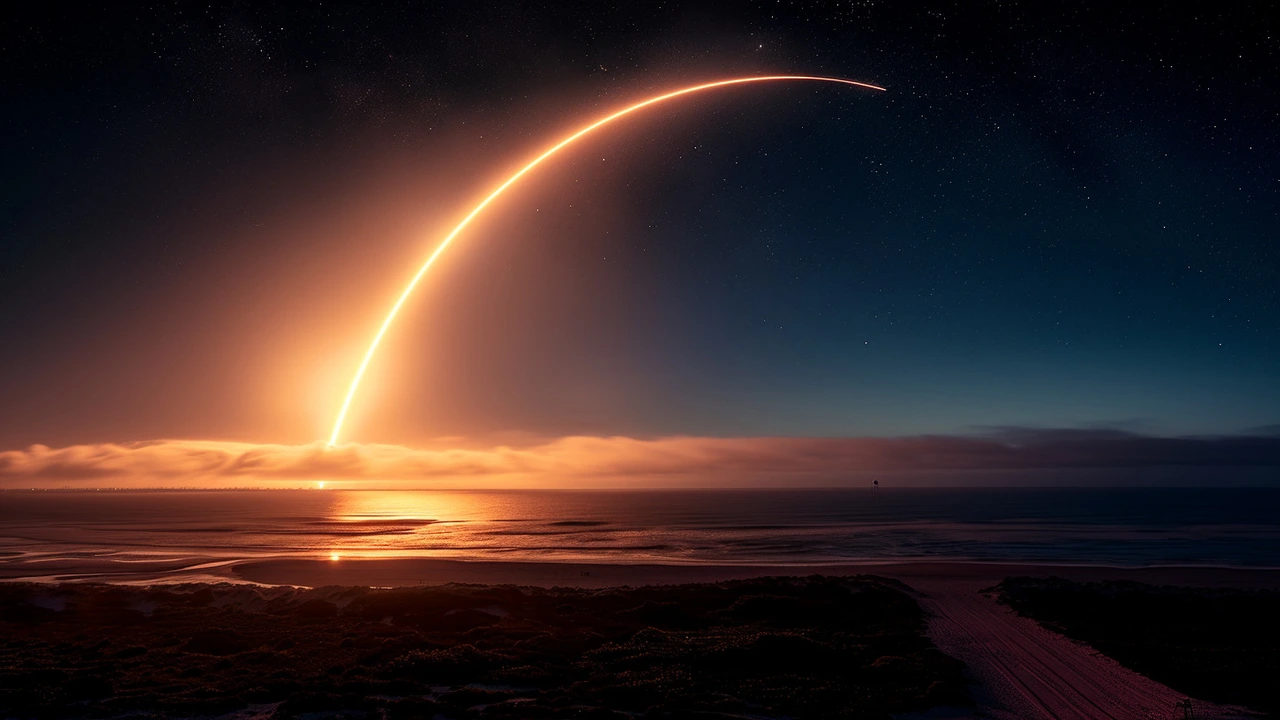Introduction to SpaceX's Ambitious Launch
Tonight marks a special occasion for SpaceX as they gear up for yet another significant launch that will emphasize their innovative strides in space technology. From the bustling grounds of Florida's Cape Canaveral Space Force Station, 23 more Starlink satellites are set to pierce through the night sky, encapsulated within the reliable walls of the Falcon 9 rocket. This event is not just another number added to their launch tally but a celebratory moment as the rocket's first stage is poised for its 15th flight and landing.
Launch Details and Window Timing
The chosen launch window for this mission opens precisely at 8:53 p.m. EDT, with activity continuing until as late as needed within the three-hour frame. For those eager to witness this event, SpaceX provides a webcast, commencing a mere five minutes before the liftoff. Such attention to timing showcases SpaceX's meticulous planning and ability to adhere to precise launch windows, a crucial aspect of orbital satellite deployment.
The Journey of Falcon 9
The stalwart Falcon 9 rocket, currently prepared with the Starlink payload, will undergo a flight approximately eight minutes long. Post-liftoff, everyone's eyes will be on the first stage of Falcon 9 as it makes its way back to Earth. This stage is expected to land flawlessly on the droneship 'A Shortfall of Gravitas,' strategically positioned in the Atlantic Ocean. Achieving the 15th landing of this first stage is more than just a technical feat; it underlines the reliability and reusability of SpaceX's rocket technology, essential for reducing space travel costs and increasing mission frequencies.
The Mission's Significance in Numbers
Tonight's undertaking will not only add 23 satellites to the existing cluster in low Earth orbit but also marks the 20th roundtrip for a Falcon 9's first stage. Looking at SpaceX's performance in 2024 alone, this launch represents one among a whopping total of 49 orbital missions. Out of these, 33 have been dedicated specifically to augmenting the Starlink megaconstellation. With around 5,900 operational satellites currently in orbit, SpaceX's ambitious Starlink network is set to expand even further.
Regulatory and Future Aspects
SpaceX's plans do not just stop with tonight's launch or even at reaching a specific number of satellites. The company holds approval to deploy up to 12,000 Starlink satellites and is currently seeking the green light to add another 30,000 to the constellation. This massive expansion is part of Elon Musk's vision to provide global broadband coverage from space, potentially transforming Internet access across the world.
Conclusion
As the clock ticks closer to the launch time tonight, the excitement and implications of this mission resonate not only through the corridors of SpaceX but also the wider space industry. Each successful launch and landing pave the way for more frequent and cost-effective space travel, propelling us further into the age of space exploration. Tonight's launch is yet another reminder of the relentless pace at which SpaceX is working to realize its vision of star-reaching connectivity.

Write a comment